|
|
|
|
Some questions about microfinance and self-help groups

The editorial examines how self-help groups and microfinance may not be what they were once intended to be - the silver bullet to eliminate poverty - and this could soon become a case of the cure being worse than the disease.

 Read Read |
|
|
|
|
|
|
|
|
Responses to the Editorial in Phalanx 4
Why Does the Anglophone Indian want to be a Novelist?

 Read Read |
|
|
|
|
|
Films: |
|
|
Avatar
by James Cameron

 Read Read |
|
|
3 Idiots
by Rajkumar Hirani Read Read |
|
|
|
|
|
|
|
|
|
|
|
|
|
Home > Contents > Essay: Lalit Joshi |
|
|

The magical world of Bombay Talkies (1934-54)

Lalit Joshi
|
|
|
|
|
|
|
|
|
|
|
|
The beginning of the twentieth century provided all Indians associated with the project of cultural nationalism, an opportunity to appropriate and define the cultural space of the nation-in-the-making. In cinema, the initiative was seized by Dhundi Rao Phalke:

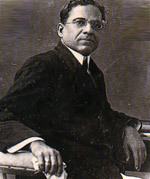 Dadasaheb Phalke, who is credited with launching the Indian film industry, appears to have been moved by a desire to occupy the screen: to place indigenous images in the space that had until been occupied by foreign ones.For Phalke, who situated his project within the then current swadeshi movement.the screen was a political space.The cinematic apparatus, i.e., the combination of image and the spectator was consciously figured as the microcosm of the future nation state.(1) Dadasaheb Phalke, who is credited with launching the Indian film industry, appears to have been moved by a desire to occupy the screen: to place indigenous images in the space that had until been occupied by foreign ones.For Phalke, who situated his project within the then current swadeshi movement.the screen was a political space.The cinematic apparatus, i.e., the combination of image and the spectator was consciously figured as the microcosm of the future nation state.(1)

As time wore on, filmmakers in India grappled hard to design an aesthetic that was colonial and modern at the same time. This meant an imminent possibility of a flirtatious engagement with American and DG Phalke European genres such as 'action', 'comedy' or 'gangster', without compromising with the broader goal of creating a product that was "uniquely, recognizably indigenous."2 Numerous films produced by Prabhat, New Theatres, Imperial Films, Ranjit Movietone, Wadia Movietone and others in this period, bear ample testimony to the ambivalent project of cultural nationalism. Himanshu Rai, the founder of the Bombay Talkies (1934-54), was no exception. However, what made his enterprise different was the cautious mobilization of German technology, Indian capital and swadeshi literary and theatrical skills. In the absence of any definite evidence it is difficult to envisage why Rai, a native of Calcutta, chose the city of Bombay for his venture. However, a cursory look at the social and cultural life of Bombay in the 1930s might help us to identify some of the factors which could have influenced his eventual decision.

Indeed, by the beginning of the 1930s, Bombay had unpretentiously grown into a sprawling metropolis. The beginnings of the process can be traced to 1918 when the municipal authorities had begun to deliberate upon the need to prepare a plan for the future expansion of the city.3 The task was finally entrusted to C.H. Cowan, then development officer at Salsette and by 1921 the blueprint for the rapid expansion of the city was ready.4 That year a number of suburban settlements such as Borivili, Kandivili, Malad, Chembur, Goregaon and Bhandup were brought within the municipal limits.5 Also, the Development Directorate commissioned the construction of 2500 houses.6 Another grant of 15 lakh rupees in 1937 triggered off a spate of constructions in the northern parts of the city - an activity that was to change the landscape of Bombay in the near future.7 By this time, Bombay had already become home to merchants and entrepreneurs belonging to Petit, Wadia, Tata, Readymoney, Thakersay, Walchand Hirachand, Currimbhai, Rehmatullah and Sassoon families as well as distinguished lawyers such as M.A. Jinnah, M.R. Jaykar, F.E.Dinshaw, L.Sanwaldas and C.Setalwad.8 The unprecedented growth of mercantile and entrepreneurial activity was not unrelated to the phenomenal increase in Bombay's labor force. In 1911, about 2,72, 000 people migrated to the city. In 1921, this number swelled to 4, 14, 000 and in 1931 stood at 4, 24,000.9 Other changes which were to transform the ways in which the island came to be connected with India and rest of the world included, the advent of telephony in 1924 and the laying down of a telegraph cable between Bombay and London in 1927.10

These developments were not unconnected to the emergence of a whole range of entrepreneurial activities which were to redefine the concepts of leisure and entertainment in the 1930s and the 40s. The Opera House, for example, had already begun to screen films as early as 1917. 11 A decade later, the situation changed so dramatically that the availability of Indian and foreign films outstripped the facilities available for screening. Perhaps this can be cited as one of the reasons for the sudden upsurge in the number of cinema halls. For example, the Regal came into existence in 1933, followed by the Plaza in 1935, the Central Cinema in 1936, the Broadway in 1937 and the Eros in 193812. As new viewing facilities expanded, entrepreneurs vied with each other in setting up film companies and production units. In the 1930s, the Bombay province had 85 film companies with well equipped studios. Among these were the Imperial Film Company, Ranjit Movietone, Sagar Film Company, Saroj Movietone, Prabhat Pictures, Wadia Movietone and the Bombay Talkies.13 This attracted writers, technicians, theatre artists and musicians from north and north western India. Mushtaq Gazdar, the Pakistani film historian, compares the divergent situations obtaining in Bombay and Lahore:

In comparison with Bombay, Lahore film production remained an unprofitable enterprise. It was rather a breeding ground for newcomers who wanted to quench their thirst without making a formal living from it. Artists and technicians who made it good in Lahore were invariably attracted to Bombay, which recognized nobody than a successful person. Bombay filmdom or Bollywood.lured men of substance into its folds, enriching itself and causing a brain drain at other film centres 14

Indeed, Bombay's cultural landscape and the presence of a robust entrepreneurial community must have attracted Himanshu Rai when he returned to India in 1934, armed with the latest photographic equipment from Europe. Himanshu Rai was born in Calcutta in a wealthy Bengali family. After graduating from Calcutta University in 1892, he moved to London, where he began to practice at the Bar. There he also met up with Niranjan Pal, writer and dramatist, and son of Bipan Chandra Pal, the radical nationalist leader of Bengal. Rai's association with Pal resulted in the production of some brilliant cinema early on in the history of the Bombay Talkies.

 Himanshu Rai's career in cinema was the culmination of a process that began with the stage in London. Among his early theatrical productions Chu Chin Chow and The Goddess won him instant recognition. Nonetheless, it was the lure of making films that brought him to Munich (1924), the German city which had emerged as the hub of filmmaking in Europe in the 1920s. Rai visited the Emelka Film Company, where he explored the possibility of joint projects with German filmmakers. It was at Emelka that the idea of his first film - The Light of Asia (Prem Sanyas) - was mooted. Rai was able to raise 90, 000 rupees in India for his debut venture.15 The scenario was written by Pal and the film was directed by Franz Osten. Rai played the protagonist (Gautam Buddha) and Sita Devi Himanshu Rai - an Anglo-Indian whose real name was Rene Smith - chosen to play the female lead. The film was processed at the Emelka Studios and was ready for release in 1925. The Company was granted exclusive distribution rights for Europe. Himanshu Rai's career in cinema was the culmination of a process that began with the stage in London. Among his early theatrical productions Chu Chin Chow and The Goddess won him instant recognition. Nonetheless, it was the lure of making films that brought him to Munich (1924), the German city which had emerged as the hub of filmmaking in Europe in the 1920s. Rai visited the Emelka Film Company, where he explored the possibility of joint projects with German filmmakers. It was at Emelka that the idea of his first film - The Light of Asia (Prem Sanyas) - was mooted. Rai was able to raise 90, 000 rupees in India for his debut venture.15 The scenario was written by Pal and the film was directed by Franz Osten. Rai played the protagonist (Gautam Buddha) and Sita Devi Himanshu Rai - an Anglo-Indian whose real name was Rene Smith - chosen to play the female lead. The film was processed at the Emelka Studios and was ready for release in 1925. The Company was granted exclusive distribution rights for Europe.

 The Light of Asia was premiered at theatres in Vienna, Budapest, Venice, Genoa, Brussels and London. In London it ran for ten months where it was viewed, among others, by King George V at the Windsor Castle.16 However, the film made little impact on the Indian audience, perhaps because it was positioned as a European product. Rai lost about 50,000 rupees in his maiden venture. Undeterred, he went ahead to make Shiraz (1928) and A Throw of Dice (1929). The first was filmed under the Emelka banner and the second under the UFA (Universum Film Octengesselschaft). Sita Devi was retained for the first film while a new actress - Devika Rani replaced her in the second. The Light of Asia was premiered at theatres in Vienna, Budapest, Venice, Genoa, Brussels and London. In London it ran for ten months where it was viewed, among others, by King George V at the Windsor Castle.16 However, the film made little impact on the Indian audience, perhaps because it was positioned as a European product. Rai lost about 50,000 rupees in his maiden venture. Undeterred, he went ahead to make Shiraz (1928) and A Throw of Dice (1929). The first was filmed under the Emelka banner and the second under the UFA (Universum Film Octengesselschaft). Sita Devi was retained for the first film while a new actress - Devika Rani replaced her in the second.

The Light of Asia Devika Rani was the daughter of the famous Indian Surgeon General M.N.Chaudhry of Madras, besides being related to the illustrious Tagore family of Bengal. An architecture graduate, she had also studied at the Royal Academy of Dramatic Arts and the Royal Academy of Music in London. When Rai sought help in designing the sets for the Light of Asia, she readily agreed. Four years later, when A Throw of Dice was almost complete, the two agreed to tie the knot. Their marriage was solemnized in 1929.

Soon after, Devika Rani began to spend more time in learning filmmaking. As an apprentice with the UFA studios, she was able to watch closely, the work of master editors such as Sternberg and Pabst. She also got an opportunity to assist the leading German actress Marlene Dietrich with her make up. However, the association between Devika Rani and the German film industry proved ephemeral. One reason for this was the introduction of sound in the mid 1920s. Sound technology necessitated fundamental changes in the methods of filmmaking. Thus, many old hands were laid off and new technicians hired. Perhaps Himanshu Rai and Devika Rani were caught unwary in this hour of transition. Another reason was the gradual but steady emergence of the Nazi party in the early 30s. The two eventually returned to London in 1933.

Their first film in England was Karma(1933). Again, Rai and Rani played the lead roles. The event was widely reported in the British Press. The Era called her "A glorious creature," whose "large velvety eyes can express every emotion." The News Chronicle proclaimed that "she totally eclipses the ordinary film star. All her gestures speak and she is grace personified." The Star, commenting on her diction noted that "her English is perfection."17 Nonetheless, Karma flopped in India, bringing Rai's European adventure to an abrupt end. One day, in a voice charged with emotion, he told Devika Rani, "We should learn from them (foreigners). But use this knowledge in our country."18 But it is doubtful if patriotism alone brought Himanshu Rai back to India. Perhaps it also indicated his failure to make a product that appealed to Indian tastes and preferences. In fact, as film historian P.K. Nair has argued, the Light of Asia, Shiraz and the Throw of Dice, "had flashes of technical brilliance, feeling of outdoors, and Indian dresses, architecture and rituals, but the attempt was abortive.(it) could not capture the spirit of the land."19

Bombay Talkies was established in 1934 as a joint stock company with a working capital of 25 lakh rupees.20 A summer mansion belonging to a Paris businessman F.A. Dinshaw, situated in Malad, served as a temporary office for the company. Perhaps Bombay Talkies was India's first film company that was established modern corporate business. With F.A. Dinshaw, Chimanlal Sitalvad, Sir Chunilal Mehta, Sir Phiroze Sethna, Sir Richard Temple and Cowasjee Jehangir on its Board of Directors, powerful business and political interests of Bombay Talkies were adequately represented.21 From the third year of its inception, the company began to issue yearly dividends to its shareholders.

Recalling the early history of Bombay Talkies, the Urdu writer Sa'dat Hasan Manto who was associated with several film projects in the 30s and 40s wrote:

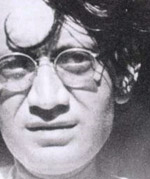 Himanshu Rai was an extremely hard working filmmaker, aloof and silent, and who kept himself busy day and night. He laid down the foundations of the Bombay Talkies in such a manner that it would appear as an ideal production house. This is why he selected for his company a spot that was far away from Bombay city. 22 Himanshu Rai was an extremely hard working filmmaker, aloof and silent, and who kept himself busy day and night. He laid down the foundations of the Bombay Talkies in such a manner that it would appear as an ideal production house. This is why he selected for his company a spot that was far away from Bombay city. 22

Manto's views are endorsed by other remembrances. In an interview Devika Rani shared her early impressions of the Talkies:

One of the architects of the one-big family company was Himanshu Rai. He supervised to the last detail, the planning and construction of the
Sa'dat Hasan Manto Bombay Talkies studio and other buildings. Selection and training of personnel received the same minute attention. Celebrated authors and scholars were constantly enlisted to conduct personnel seminars. Assignment of staff workers to a variety of duties that  would broaden their conception of the film medium was a policy he personally implemented. He planned recreational facilities, took interest in health problems, and even supervised the purchase and installation of electric stoves for the canteen. 23 would broaden their conception of the film medium was a policy he personally implemented. He planned recreational facilities, took interest in health problems, and even supervised the purchase and installation of electric stoves for the canteen. 23

Furthermore, the bonding that the employees shared with each other was known to be legendary:

It was known that at Bombay Talkies, all company members of whatever caste ate together at the company canteen. It was even said that top actors on occasion, helped to clean floors. Himanshu Rai, perhaps with
Devika Rani Gandhi's visit to Santiniketan insisted on such scrambling of functions.24

A report published in the Times of India of May 17, 1939, featuring the visit of the Governor of the Bombay province - Lord Brabourne and his wife to the studio complex, provides an eye witness account:

The Governor of Bombay and lady Brabourne paid a visit on Thursday evening to the studios of the Bombay Talkies Limited at Malad. They were received by Sir Chimanlal Setalvad, Sir Pheroze Sethna, Directors of the Company, Mr. Himanshu Rai and Sir Richard Temple and shown over the most up-to-date cinematograph studios in India.Situated in delightful surroundings these studios have been planned on a systematic and careful plan. The original house of the small estate forms the executive offices and the living quarters of certain executives. Close by on a slightly lower level there has been built a magnificent studio equipped with the most up-to-date appliances to expedite the moving of scenery, the mobility of cameras, the lighting of the sets etc. Lord and Lady Brabourne were able to witness the actual shooting of a scene from the first big film produced by the Company in which Devika Rani, the "star" of Karma is being featured.25

The report also carried details about the technology deployed in the studios and the efforts to indigenize it. It also highlighted some of the problems associated with filmmaking in India:

Beyond the giant thickly padded sound studio is a small projecting theatre in which scenes are shown to the executives.a few hours after being shot. Further over are dressing rooms for the artistes and a music room for necessary rehearsals. Then again there is an up-to-date laboratory for the development, fixing, drying, cutting and synchronization of films.What apparatus could be constructed in this country such as development and drying plant has been produced by Indian labour while the complicated machines for intricate purposes have been imported. There are difficulties.Such things as temperature and humidity have to be controlled. Water - at Malad only available from a not so unfathomable well - has to be filtered and cleansed.Above all the prevalence of dust is a veritable menace.Thus the air throughout the laboratory has to be carefully filtered. All these things have been attended to with the result that the Company is assured of first class production. Efficiency has been set before extravagance so that these studios are on a modest scale but the best of their kind.26

Bombay Talkies began to attract talent from all parts of the country. This included directors and technicians such as N.R. Acharya, Najam Naqvi, R.D.Mathur, Shasdhar Mukherji, Savak Wacha, M.I.Gharamse and actors like Ashok Kumar, Kishore Sahu, Ramshakal Sarikhe, Renuka Devi and Snehprabha - all constituting one large family.27 Besides, every year hundreds of university graduates inundated its offices. Rai personally interviewed them and offered lucrative placements to the talented among them.28 Thus Ashok Kumar debuted as a laboratory assistant, Raj Kapoor as a clap boy and Khwaja Ahmed Abbas as a script writer.29 At its zenith, Bombay Talkies had about four hundred people on its rolls. Most of them were Indians except a core team comprising of European technicians. The list incorporated Franz Osten (director), Joseph Wirsching (cameraman), Carl von Spratti (set designer) and Len Hartley(sound recordist). Never before in the history of colonial India had such a curious blending of global talent contributed to the creation of what has been described as a "heterogeneous mode of production." 30

Himanshu Rai and Franz Osten were responsible for the production of several significant films such as Jawani Ki Hawa (1935), Janambhoomi (1936), Jeevan Naiya (1936), Mamta (1936), Miya Biwi (1936), Izzat (1937), Jeevan Prabhat (1937), Nirmala (1938) and Vachan Kangan (1939). Jawani Ki Hawa, the first production from Bombay Talkies, was a racy thriller in what film historian Garga has alluded to as the 'Agatha Christie' style.31 Kamla (Devika Rani) elopes with her lover Ratan Lal (Najmul Hasan) to evade an arranged marriage. Kamla's father quickly manages to track them down and boards the same train. Later on, it is found out that the assassin is a criminal called Sukhdev. Thus, a tragedy is averted and the young lovers united. However, just before the film's release another disaster was prevented. The Parsi community of Bombay appealed to the Censor Board to restrain the screening of the film as the inclusion of two Parsi women in the film had raised ethical questions. The Censor Board was not convinced. However, when it was finally released, the film was favorably reviewed by the audience.

Shashdhar Mukherji (1907-70) and Ashok Kumar (1911-2002), were the early discoveries of Bombay Talkies. Born in Rawalpindi and brought up in Jhansi, Mukherji began started as a teacher after obtaining a first class Master's degree in Physics from Allahabad University. His father Haripado Mukherji - a leading lawyer of Jhansi, wanted his son to step into the legal profession. He even made appropriate arrangements for his son's education in London. However, a few days before his departure, Shasdhar Mukherji met Himanshu Rai in Bombay. The young physics postgraduate cast a favorable spell on Rai and the latter offered him immediate placement in the sound department.32

Mukherji, because of his knowledge (he was a voracious reader), smartness and genuine interest in all departments of filmmaking, rose in the esteem of the founder and came close to him. And he was increasingly involved in production work in addition to his duties in the sound department. 33

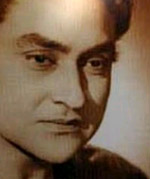 One of the first things that Mukherji did after joining Bombay Talkies was to invite his brother-in-law Ashok Kumar, then a science graduate in Calcutta to try his hands at the film industry. Ashok Kumar's father was a lawyer in Khandwa and wanted his son to pursue law. Like Mukherji, Kumar too was planning to elude the legal profession. Mukherji's letter strengthened his resolve. He landed in Bombay only to be hired as an assistant to Joseph Wirsching in the photography and laboratory department. He would have remained a technician for life had it not been for the scandal of 1936, which involved Devika Rani's elopement with the leading star Najmul Hussain. Manto captures the incident vividly: One of the first things that Mukherji did after joining Bombay Talkies was to invite his brother-in-law Ashok Kumar, then a science graduate in Calcutta to try his hands at the film industry. Ashok Kumar's father was a lawyer in Khandwa and wanted his son to pursue law. Like Mukherji, Kumar too was planning to elude the legal profession. Mukherji's letter strengthened his resolve. He landed in Bombay only to be hired as an assistant to Joseph Wirsching in the photography and laboratory department. He would have remained a technician for life had it not been for the scandal of 1936, which involved Devika Rani's elopement with the leading star Najmul Hussain. Manto captures the incident vividly:
Ashok Kumar

 Bombay Talkies plunged into chaos. Some scenes had already been shot when Najmul Hasan took his heroine awayom the celluloid world to the real. Within the Bombay Talkies it was Rai who was the most despondent. He was Devika Rani's husband - the mysterious heart and brain of Bombay Talkies - the 'brain behind', as it was called in English.34 Bombay Talkies plunged into chaos. Some scenes had already been shot when Najmul Hasan took his heroine awayom the celluloid world to the real. Within the Bombay Talkies it was Rai who was the most despondent. He was Devika Rani's husband - the mysterious heart and brain of Bombay Talkies - the 'brain behind', as it was called in English.34

Rai quickly responded by terminating the services of his colleague - Nirmal Sengupta, whom he suspected of conniving with Hussain at the behest of the New Theatres in Calcutta.35However, Rai's action was not adequate to defuse the crisis precipitated by Hussain's disappearance.
Joseph Wirsching Distressed by his mentor's condition, Shashdhar Mukherji, then working as an assistant under the sound engineer Savak Wacha, decided to help:

Mukherji wanted Devika Rani to return somehow. Therefore, even without consulting his boss Himanshu Rai.by.intrigue and cunning he.was able to persuade Devika Rani to abandon her lover Najmul Hasan in Calcutta and return to the fold of Bombay Talkies which promised full development of her personality and skills.36

After Devika Rani returned, Rai refused to negotiate with Hussain. But how was Bombay Talkies to find an actor of his talents ?

Once again Mukherji came to his master's rescue. His brother-in-law Ashok Kumar, still learning the craft had 'good features', could also sing.Mukherji mentioned his name for the hero's role.Rai's life had been full of experiments. He said, "We shall see". The German cameraman took Ashok Kumar's screen test and approved him.Franz Osten pronounced just the opposite.But in Bombay Talkies, who could express an opinion contrary to Rai's. Hence Ashok Kumar, who was in those days a young man of twenty years, was selected Devika Rani's hero. 37

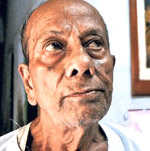 Achhut Kanya became the turning point in Ashok Kumar's life. Based on Niranjan Pal's short story 'The Level Crossing', the film tried to explore a politically charged issue of twentieth century social reform, namely, untouchability. In the film Ashok Kumar played Pratap, the young brahmin boy and his tender romance with an untouchable village girl Kasturi (Devika Rani). The railway crossing was used in the film as a metaphor for the caste system which only allowed selective mobility. Achhut Kanya became the turning point in Ashok Kumar's life. Based on Niranjan Pal's short story 'The Level Crossing', the film tried to explore a politically charged issue of twentieth century social reform, namely, untouchability. In the film Ashok Kumar played Pratap, the young brahmin boy and his tender romance with an untouchable village girl Kasturi (Devika Rani). The railway crossing was used in the film as a metaphor for the caste system which only allowed selective mobility.

Niranjan Pal Narrative closure occurs when Pratap and Kasturi's jealous husband get entangled in a violent physical combat and Kasturi is run over by a speeding train. Achhut Kanya was also responsible for presenting the 'idealized Indian village', for the first time on the diegetic space, a metaphor that caught the fancy of many other filmmakers. Following the success of Achhut Kanya, Ashok Kumar and Devika Rani featured in the next four productions - Janam Bhoomi (1936), Izzat (1937), Prem Kahani (1937), Savitri (1937):

One film after another.Devika Rani and Ashok Kumar became an inseparable pair.In schools and colleges Ashok Kumar became the idol for girls.boys began to wear long-sleeved Bengali kurtas and sang "Tu ban ki chiriya main ban ka panchi/Ban ban boloon re.38

Ashok Kumar narrated a slightly different version to Ajatshatru, his biographer:

Himanshu Rai first asked the German director Franz Osten to take my test for Jeevan Naiya. Osten told me, "You have square jaw. You cannot become an actor. Go home. Study law.However, human eyes are sharper, intelligent than the camera. Himanshu Rai saw something in me and remained firm. When I think about it today, I feel it was he who faced the first challenge.only he was with me while the entire unit was against.I think like actors, even directors have intuition.father came to rescue me from this maligned profession.Himanshu Rai stopped him and said with great confidence, "Let this boy stay here, he will become famous tomorrow.39

With his transition to acting complete, his salary was fixed at 75 rupees:

Ashok Kumar was very happy.when it became 150 rupees, he was happier.when it became 250, he got scared." He confided to Manto, "I did not know where to keep so much money.finally kept it under the carpet.saw bad dreams.the first thing I did in the morning was to deposit the money at the post office." 40

Another significant event of 1936 was the parting of the ways between Niranjan Pal and Himanshu Rai. Between May and October 1931, Pal had written a series of essays in Filmland, indicting Indian filmmakers for their greed and disregard for good cinema. Marked by remarkable self-reflexivity, Pal's essays reflect a writer's overpowering concern for the spread of greed in the film industry and the need to promote good art in the time of swadeshi nationalism.

Who are the men at the helm? The get-rich-quick adventurers who promise the unwary financier a first class film for 5000 rupees and 300 percent profit within three months. Everyone loves to make a fortune.The average financier is a bit of a visionary and the invitation to quick riches finds a quick response in him. Hence the mushroom-like growth of film companies sponsored mostly by men who know nothing about the film and who have no desire to know anything about it.41

And again:

The Indian film industry - such as it is - will never be able to occupy a place of honour among filmmakers in the world until such time when a set of new men - with vision and courage - take a hand in shaping its destiny. The men in control of the industry have failed woefully: they have not made any original attempt, any original contribution to the film world.I include myself as one of the failures.42

Warning against those who were promoting inferior art in the name of swadeshi Pal wrote:

We in India are too prone to raise to the seventh heaven anything which is labeled swadeshi .The encouragement of native products is no doubt the primary duty of every true Indian, but why encourage failures.The film-going public are too easily satisfied.We are all making money.why should we bother about engaging better artists and technicians.43

For Pal, swadeshi did not only imply a qualitative better product but also a disavowal of all foreign expertise and help.

I place no faith in the ability of foreign experts and technicians to make Indian films. No foreigner, even if he be a genius, can correctly interpret the intricacies and the subtleties of our culture in a manner which will be easily intelligible to the average filmgoers.Take the case of Franz Osten, who directed Shiraz and Throw of Dice and who was engaged to act as co-director of the Light of Asia with my humble self. During the production of this film I had very serious difference with him which exasperated me to such an extent that finally I had to retire from the production 44

In this Pal seems to clearly reaffirm the position taken by Phalke in 1917 when the latter wrote, "My films are swadeshi in the sense that the ownership, employees and stories are swadeshi.45

Pal's critique of the industry became a source of embarrassment to Rai. He asked his colleague to immediately refrain from expressing his views in print. Pal refused and quit Bombay Talkies in a huff. When Rai failed to win him back, Pal was replaced by Sardendu Bannerji, a novelist from Bengal. In fact, the 1936 production Bhabhi was based on Banerji's story. Another addition to the film fraternity was Amiya Chakravarty, then a clerk at the company's canteen, but who was trained by Rai to become a script writer at the studios. Between 1937-38 three more films (Nirmala, Vachan and Durga) were released and which performed moderately at the box office.

In 1939, just when Mukherji had put together a script and started shooting, the Second World War broke out. The Bombay government immediately ordered the arrest of all German technicians hired by the company. There is no evidence whether all German technicians at the Bombay Talkies subscribed to Nazism but Osten was already become a member of the Nazi party.46 With the arrest and internment of the entire German crew at Deolali, production came to a standstill. Kangan was finally completed by N.R. Acharya, the production manager and Najam Naqvi, the assistant director. The film became a box-office success. Navjeevan followed, but failed to attract audience attention. A distraught Rai began to work frenetically on the script of Narayani.

As Rai continued to struggle with the script of Narayani, his mental condition began to deteriorate alarmingly. He was admitted to Bacha's Nursing Home where, he died on May 19, 1940.47 While Rai was still in the hospital, a script for a forthcoming production had been finalized. As was the custom Rai's final approval was necessary. When it was ultimately shown to him, Rai could barely turn the pages. He clutched the pages close to his heart, mumbled some words and died a few minutes later.48

After Rai's death the shareholders appointed Devika Rani as the production controller of Bombay Talkies. Meanwhile, the Directors convened a special meeting to deal with the crisis where some felt that Bombay Talkies lacked the competence to make good cinema and sought outside help. Responding to the criticism Chunilal, the General Manager of the company stated, "All these years, the Germans have trained a group of dedicated and hardworking youngsters.they are capable of handling their respective departments and loyal to the company. It will be healthy to give them a chance."49

The basic issue thus resolved, it was time to set the agenda for the future. One of the first things Devika Rani did was to split production under two units. One was kept under the charge of Amiya Chakravarty (1912-1957) and the other under Shashdhar Mukherji. Born in Bogra (East Bengal, now Bangladesh), Chakravarty was attracted to theatre from childhood. Early in his youth, he began to perform with local theatre groups and would have blossomed into an artist of modest reckoning had it not been for the Non-Cooperation movement of 1920-22. Between the Non-Cooperation and the Civil Disobedience (1930-32) movements, Chakravarty remained in and out of police custody. In 1935 he visited Bombay where he met Niranjan Pal who employed him as a tutor. Later, a chance meeting with Rai provided him the opportunity to write the scenario for Punarmilan (1940) followed by Basant (1942), Jwar Bhata (1944) and Ankhen (1944), by which time he assumed charge of production as well.

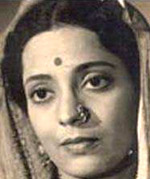 The first film to be produced under Mukherji was Bandhan (1940). Written by Gyan Mukherji and directed by N.R. Acharya, the film had Ashok Kumar and Lila Chitnis in the lead. Bandhan whose script was perhaps the last to be approved by Himanshu Rai, turned out to be a runaway success. Writer Upendranath Ashk, recalls the event: The first film to be produced under Mukherji was Bandhan (1940). Written by Gyan Mukherji and directed by N.R. Acharya, the film had Ashok Kumar and Lila Chitnis in the lead. Bandhan whose script was perhaps the last to be approved by Himanshu Rai, turned out to be a runaway success. Writer Upendranath Ashk, recalls the event:

After Achhut Kanya many films of the Bombay Talkies flopped one after the other. The financial situation was in doldrums. Around this time a person, who was a sound recordist, narrated.Chakravarty's story to Himanshu Rai and his wife.Devika Rani. Both liked it.The film was a hit at the box-office. The name of the film was Bandhan and the sound recordist
Lila Chitnis Shashdhar Mukherji.50

Bandhan's success set the tone for other productions such as Jhoola (1941) and Naya Sansar (1941). Directed by N.R. Acharya, Jhoolas's song 'Main to dilli se dulhan laya', composed by Saraswati Devi of the Achhut Kanya fame, became very popular. Likewise, Naya Sansar, a film scripted by a young Khwaja Ahmed Abbas and whose story underscored the virtues of fearless journalism, was received with much acclaim. Thus, Bombay Talkies seemed to have hit upon the right formula. Ashok Kumar Devika Rani and Leela Chitnis had indeed become household names. Pran Neville vividly remembers one such moment in Lahore:

As we grew up, we got more and more interested in romantic themes and began visiting cinema houses in Mcleod Road where tickets for the lowest class cost six annas.By now, film music had struck deep roots in the people's mind. Film songs were pressed into discs and gramophones became a familiar feature in many households. Booklets containing film songs were available for one anna each, while those containing dialogues were sold for two annas each.Among the popular songs of the days were "Chal Chal Re Naujawan", by Ashok Kumar.A memorable event around 1941 was the maiden visit of Ashok Kumar and Leela Chitnis to Lahore. After the resounding success of Kangan, Bandhan and Jhoola, I recall how the young people crowded the Railway Station to have a glimpse of the stars as they alighted from the train. Later, they appeared on the Regent stage during the screening of Jhoola.51

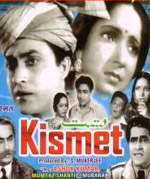 Out of the three films made by Bombay Talkies between1942-43, only one brought significant returns at the box office. This was Kismet (1943). However others such as Basant (1942) and Hamari Baat (1943) were moderately successful. For Basant, Devika Rani was able to persuade Mumtaz, the famous actor from Lahore, to play the lead role. Besides, she cast herself opposite Jairaj for the last time in Hamari Baat. Out of the three films made by Bombay Talkies between1942-43, only one brought significant returns at the box office. This was Kismet (1943). However others such as Basant (1942) and Hamari Baat (1943) were moderately successful. For Basant, Devika Rani was able to persuade Mumtaz, the famous actor from Lahore, to play the lead role. Besides, she cast herself opposite Jairaj for the last time in Hamari Baat.

The last landmark film produced by Shasdhar Mukherji was Kismet (1943). Kismet was made at a time when the film industry was ravaged by wartime shortages and obtrusive censorship. The plot of the film is built around a vagabond pickpocket Shekhar (Ashok Kumar), who befriends a former theatre owner. Shekhar's falls in love with his friends' beautiful daughter Rani (Mumtaz Shanti). Much to Shekhar's consternation, financial distress forces Rani into the dancing profession. She becomes a virtual slave of Indrajit, the new owner of her father's theatre. The climactic scenes are played out in the film when Shekhar breaks into Indrajit's house in order to raise money for Rani's expensive surgery and is pleasantly surprised to discover that Indrajit is his own father. Kismet became a runaway success because of the way in which montage was deployed to maintain the pace of the narrative and its melodious songs.

Kismet touched upon three major areas. The first of these was the glamorization of urban vagrancy and petty crime, a theme that was elaborated by later filmmakers like Raj Kapoor and Dev Anand. The second was the idea of melodramatic family division and reunion called upon by several successive filmmakers. The high point of the film however remained the invocation of mother India in the famous song Aaj Himalaya Ki Chhoti Se Phir Hamne Lalkara Hai/ Dur Hato Tum Duniya Walon Hindustan Hamara Hai. The frontal positioning of mother India in the song and her darsanic gaze became the sine qua non of post-war national awakening in India.

By the time Kismet was released irreconcilable differences had developed between Mukherji and Devika Rani. One writer suggests that after the stupendous success of Kismet, Mukherji wanted a raise in his salary. But Devika Rani resolutely declined. Consequently, Mukherji along with fourteen others including Ashok Kumar, Chunilal, Gyan Mukherji, Savak Vacha, Dattaram Pai and Marshall Braganza, quit Bombay Talkies and founded a new company in Goregaon and named it Filmistan (1943).52
The exodus of Mukherji and Ashok Kumar from the Bombay Talkies threw the company into further turmoil. The situation was aggravated by the production of three flops in a row. The first of these was Char Ankhen (1944), directed by Sushil Majumdar and with Leela Chitnis and Jairaj in the lead. The second was Jwar Bhata (1944), Dilip Kumar's debut film and the third, Pratima (1945), starring Dilip Kumar and Swarnalata. Incidentally, Pratima became the last film produced by Devika Rani.

Devika Rani married Svetsolav Roerich, son of the famous painter Nicholas Roerich in 1945 and decided to settle down in the Kulu valley in Himachal Pradesh.53 Her shares were bought by Shiraz Ali Hakim, then owner of the Famous Studios of Bombay. This event in fact signaled a gradual yet steady dismantling of the Bombay Talkies. When India was partitioned in 1947, Ali Hakim decided to relocate to Pakistan. Once again ownership switched hands. The new owner of Bombay Talkies was Gobindram Sakesria, a prosperous Marwari cotton magnate.54 His manager Hiten Chaudhry was able to bring back into the fold Ashok Kumar, Savak Vacha and Josef Wirsching, who had been released after the war.55

A series of films followed. Among these was Milan (1946), directed by Nitin Bose, Nateeja (1947), directed by Najam Naqvi; Majboor (1948), directed by Nazir Ajmeri; and Ziddi (1948), directed by Shahid Latifi. Ziddi was Dev Anand's debut film and became quite a rage. Two other films of this period deserve special mention. Mahal (1949), written and directed by Kamal Amrohi, with Ashok Kumar and Madhubala, became such sensation that it seemed that Bombay Talkies was well on its way to recovery. The second was Sangram (1950), directed by Gyan Mukherji and which launched Nalini Jaywant to fame.

When Ashok Kumar and Vacha left Bombay Talkies for the second time (1950), catastrophe followed. The management of the studios was handed over to a worker's cooperative which struggled to produce three films - Mashaal (1950), Maa (1952) and Tamaasha (1952), all commercial failures. The Cooperative was under serious financial debt. Ashok Kumar, Dev Anand, Meena Kumari and many others came to its rescue by pledging to work free for its films. The last film to be produced was Badban (1954). Soon after, Bombay Talkies was purchased by Tolaram Jalan, a financier who had acquired Filmistan in 1953. One of the first steps that Jalan took was to order the gates of the studio to be permanently locked. Plans were subsequently unveiled for converting Bombay Talkies into an industrial centre. A prolonged and inconclusive legal battle ensued. It was evident that the curtains had finally fallen over one of the most ambitious and imaginative cultural projects of modern India.

To ascertain why a company like Bombay Talkies with a sound financial and technical infrastructure collapsed in 1954, is not easy.56One can only surmise that the roots of the crisis lay in the failure of Bombay Talkies to keep pace with the new modes in which capital, technology and human resources were being mobilized to make films. Narottam Vyas, a writer-in-residence both at Prabhat and Bombay Talkies, remorsefully recalled the situation obtaining in the 1940s.

As the industry gained dimensions, mushroom producers came in large in large numbers and the first thing they did was to eliminate the position of the writers. They wrote stories themselves or adapted Hollywood films. After the Second World War, making of original stories became a taboo.57

Statistical accounts prepared by the Indian Motion Pictures Almanac show that around 1942, there was a sudden explosion in the number of independent producers in the film industry.58 Evidence shows that during the war, a whole range of new industries related to electrical and mechanical engineering, metallurgy, food, paints and dyes were set up to meet the war demand. Thus there were profits to be made in every kind of entrepreneurship. Besides, a domestic regime of rationed supplies stimulated profiteering.59 It is possible that a part of this wealth was ploughed back into the film industry.

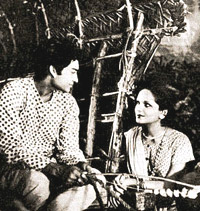 The films made by Bombay Talkies made little pretence of refiguring contemporary political struggles. For example there was little attempt to address the question of class inequality when Filmistan had already produced the much acclaimed Mazdoor - a film indicting the capitalist system for creating sharp inequalities between industrial labor and the owners of wealth. The caste question figured in Achhut Kanya, allegorically as the love story of Pratap and Kasturi, but its resolution was sought in the refutation of untouchability and not in the rejection of the caste system as whole. A reformed India could now gaze at its margins with sympathy. Like class, the women's question was treated with indifference. This was when productions from other Achhut Kanya studios such as Aurat Ka Badla (1930), Amar Jyoti (1936), Duniya Na Maane (1937) had dared challenge patriarchy. The films made by Bombay Talkies made little pretence of refiguring contemporary political struggles. For example there was little attempt to address the question of class inequality when Filmistan had already produced the much acclaimed Mazdoor - a film indicting the capitalist system for creating sharp inequalities between industrial labor and the owners of wealth. The caste question figured in Achhut Kanya, allegorically as the love story of Pratap and Kasturi, but its resolution was sought in the refutation of untouchability and not in the rejection of the caste system as whole. A reformed India could now gaze at its margins with sympathy. Like class, the women's question was treated with indifference. This was when productions from other Achhut Kanya studios such as Aurat Ka Badla (1930), Amar Jyoti (1936), Duniya Na Maane (1937) had dared challenge patriarchy.

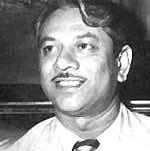 Nevertheless, it would it would be harsh to dismiss the films made by Bombay Talkies as light comedies as writer-director Khwaja Ahmed Abbas has done. Nevertheless, it would it would be harsh to dismiss the films made by Bombay Talkies as light comedies as writer-director Khwaja Ahmed Abbas has done.

While the pictures of Prabhat and New Theatres were noted for their dramatic appeal, Bombay Talkies established itself with light comedies.60

Priya Jaikumar has recently suggested that the "narrative and
K.A. Abbas visual strategies developed in Achhut Kanyaare no less complex than in V. Shantaram's films."61 Indeed, the films of Bombay Talkies differed from those made by its contemporaries in one significant way - they had less complicated dialogues. A disclosure made in this regard by Colin Pal, the son of Niranjan Pal is particularly interesting.

Both Bengalis [Rai and Pal] who understood precious little Hindi stipulated that no dialogue be passed until they could follow it.J.S. Kashyap (dialogue writer and lyricist) would literally tear his hair in trying to make his dialogues simple enough.62

Bombay Talkies was clearly a modernist project, perhaps in the way all modern Indian art was. The modern aesthetic became an instrument for redeeming India's past from its recent humiliation and despair. Perhaps this is why a frontal attack on contentious questions emerging during the nationalist movement was carefully avoided. Had there been a direct engagement, filmmaking in the colonial period would have charted a different course.


Notes/ references

| 1. |
M. Madhava Prasad, The State in / of Cinema, in Partha Chatterji (ed.), Wages of Freedom, OUP, New Delhi, 1998, p.123 |
| 2. |
Ibid.p.124. |
| 3. |
Sharda Dwivedi and Rahul Mehrotra, Bombay, The Cities Within, India Book House, Bombay, 1995, p.208. |
| 4. |
Ibid. |
| 5. |
Ibid. |
| 6. |
Ibid. p.209. |
| 7. |
General Wage Census, First Part, Perennial Factories, Third Report, Bombay Government, Bombay, 1937, p.61-64. |
| 8. |
Ibid. p. 215. |
| 9. |
Amiya Kumar Bagchi, Private Investment in India, Orient Longmans, 1972, p.125. |
| 10. |
Dwivedi and Mehrotra, p.209. Bombay offered other advantages such as (a) its predominance over maritime trade (b) 90 percent of the textile industry controlled by Indian capital and (c) its demographic heterogeneity (Meera Kosambi, Bombay in Transition, The Growth and Social Ecology of a Colonial City, Amkvist and Wiskell International, Stockholm, Sweden, 1986, pp.50-57) |
| 11. |
Dwivedi and Mehrotra, p. 211. |
| 12. |
Ibid. p.229-235. |
| 13. |
Sumita Chakravarty, National Identity in Indian Cinema, OUP, Delhi, 1996, p.208. |
| 14. |
Pakistan Cinema (1947-1997), OUP, Karachi, p.8. By this time Bombay had also dislodged Calcutta as an attractive destination for trade, investment and politics. But this was also partly due to the transfer of capital from Calcutta to Delhi in 1912 and the emergence of the United Provinces as a centre for nationalist struggle (Claude Markovits, Bombay as a Business Centre in the Colonial Period: A Comparison with Calcutta, in Sujata Patel and Alice Thorner (eds.) Bombay, Metaphor for Modern India, OUP, New Delhi, 1996, p.36. |
| 15. |
E. Barnouw and S. Krishnaswamy, Indian Film, OUP, New Delhi, 1980, p.95. |
| 16. |
Basu Bhattacharya, Pioneers from Bengal, Cinema Vision, Vol.1, No.1, 1980, p.59. |
| 17. |
Cited in Barnouw and Krishnaswamy, p.98. |
| 18. |
Ibid. |
| 19. |
And the Swadeshi Film Was Born, Journal of South Asian Cinema, Vol.1, February, 2001, no.1, p.45. |
| 20. |
B.D. Garga, So Many Cinemas, Eminence Designs, Bombay, 1996, p.105. |
| 21. |
Ibid. |
| 22. |
Saadat Hasan Manto, Meena Bazaar, Rajkamal Prakashan, New Delhi, 2001, p.30. |
| 23. |
Cited in Barnouw and Krisnaswamy, p.119. |
| 24. |
Ibid. p.103. |
| 25. |
Flashback, Times of India, 1990, p.112. |
| 26. |
Ibid. |
| 27. |
Garga, p.111. |
| 28. |
Barnouw and Krishnaswamy, p.100. |
| 29. |
Ibid. |
| 30. |
Prasad makes a significant distinction between filmmaking in Hollywood and Bombay. He argues that while in Hollywood it is the transformation of the "raw material, the story scenario, into a film", in Bombay "separate components" are developed and "assembled into the final product." For details see M.Madhava Prasad, Ideology of the Hindi Film, A Historical Construction, OUP, New Delhi, 1998, pp. 42-45. |
| 31. |
Garga, p.106. |
| 32. |
R.M. Kamtekar, S.Mukherji, Committed to Cinema, Screen, 1995, p.69. |
| 33. |
Ibid. |
| 34. |
Manto, p.30. |
| 35. |
Bombay Talkies, in Rafique Baghdadi and Rajiv Rao, Talking Films, Harper Collins Publishers India, Delhi, p. 352. |
| 36. |
Manto, p.30. |
| 37. |
Ibid. p.31 |
| 38. |
Ibid. |
| 39. |
Ajatsatru, Ashok Kumar, Samvad Prakashan, Meerut, p.25. |
| 40 |
Manto, pp.31-32. |
| 41. |
India and the Screen, Filmland, May 2, 1931, reprinted in Samik Bandopadhyaya (ed.), Indian Cinema: Contemporary Perceptions from the Thirties, Celluloid Chapter, Jamshedpur, 1993, p.80. |
| 42. |
Ibid., India and the Film Industry I, Filmland, May 9, 1931, p.82. |
| 43. |
Ibid. |
| 44. |
India and the Film Industry II, Filmland, May 16, 1931, p.85. |
| 45. |
Essays on the Indian Cinema, Navyug, November/December, 1917, cited by Asish Rajadhyaksha, The Phalke Era: Conflict of Traditional Form and Modern Technology, in T.Niranjana, P.Sudhir, V.Dhareshwar (ed.), Interrogating Modernity, Seagull, Calcutta, 1993, p. 66. |
| 46. |
Ashish Rajadhyaksha and Paul Willeman (eds.), Encyclopedia of Indian Cinema, OUP, New Delhi, 1995, p.250. |
| 47. |
Baghdadi and Rao, p.353. |
| 48. |
Barnouw and Krishnaswamy, p.120. |
| 49. |
Ibid. |
| 50. |
Upendranath Ashk, Filmi Jeevan Ki Jhalkiyan,Vol.1, Neelabh Prakashan, Allahabad, 1993, p.34. |
| 51. |
Pran Neville, Lahore : A Sentimental Journey, Harper Collins Publishers India, 199, p. 165. |
| 52. |
Baghdadi and Rao, p. 355. |
| 53. |
Several years later Devika Rani confessed to the film critic Iqbal Masud that she sold off the Bombay Talkies to escape the confusion of Bombay and spend the rest of her life in idyllic conditions (Iqbal Masud, Dream Merchants, Politics, Partition, Harper Collins, New Delhi, 1987, p.51). |
| 54. |
When Masud asked Devika Rani about the incident she cryptically answered that the Marwaris destroyed it (p.53). |
| 55. |
Baghdadi and Rao, p.356. |
| 56. |
At this point one can also not resist the temptation of contrasting the situation in Bombay with that obtaining in Hollywood in the late 1940s when hundreds of studios were closed down. Competition from foreign films, falling number of cinema audiences, the birth of television and the interventions by the Justice department contributed to this malaise. A cultural shift which was influencing the leisure habits of thousands of Americans could also be detected. Researchers have found that more and more Americans were cashing saving certificates issued during the war and buying properties in the suburbs. This raised the cost of watching movies as most theatres were still situated in the heart of the city. The final blow was dealt by the Justice Department in 1948 which intervened in 1948, accusing studio owners of block booking and violated thereby the provisions of the Sherman Anti-Trust Act. Following a Supreme Court many prominent studios (MGM, Warner Brothers, Paramount, Columbia) were dismantled. Douglas Gomery has examined these developments in much detail (The Hollywood Studio System: A History, British Film Institute, London, 2006). |
| 57. |
Narottam Vyas, Writers Were Better Respected, Indian Talkie, 1937-56, Film Federation of India, Bombay, 1956. |
| 58. |
Between 1940-1947, the number of independent producers increased from 42 to 125 and the total number of producers from 100-214. These figures were prepared by the Indian Motion Picture Almanac and cited in Barnouw and Krishnaswamy, p.121. |
| 59. |
B.R.Tomlinson, The Economy of Modern India, 1860-1970, Cambridge University Press, Cambridge, 1995, p. 142. |
| 60. |
Cited in Chakravarty, p.72. |
| 61. |
Cinema at the end of Empire, Seagull, Calcutta, 2006, p.228. |
| 62. |
Ibid. p.229. |


Lalit Joshi is Professor of History at the University of Allahabad

Lalit Joshi is a Professor in the Department of History at Allahabad University. His areas of teaching and research include Cultural Globalization and the History of Cinema. He has published extensively in Hindi and English in international and national journals and anthologies. His manual on Hindi Cinema titled HOUSE FULL is going through a second edition. His recent publications include Bollywood Texts (Vaani, New Delhi, 2010) and Mapping India's Cultural Globalization (Orient Blackswan, Forthcoming).


|
|
|
|
|
|
Top |
|
|
|
|
|